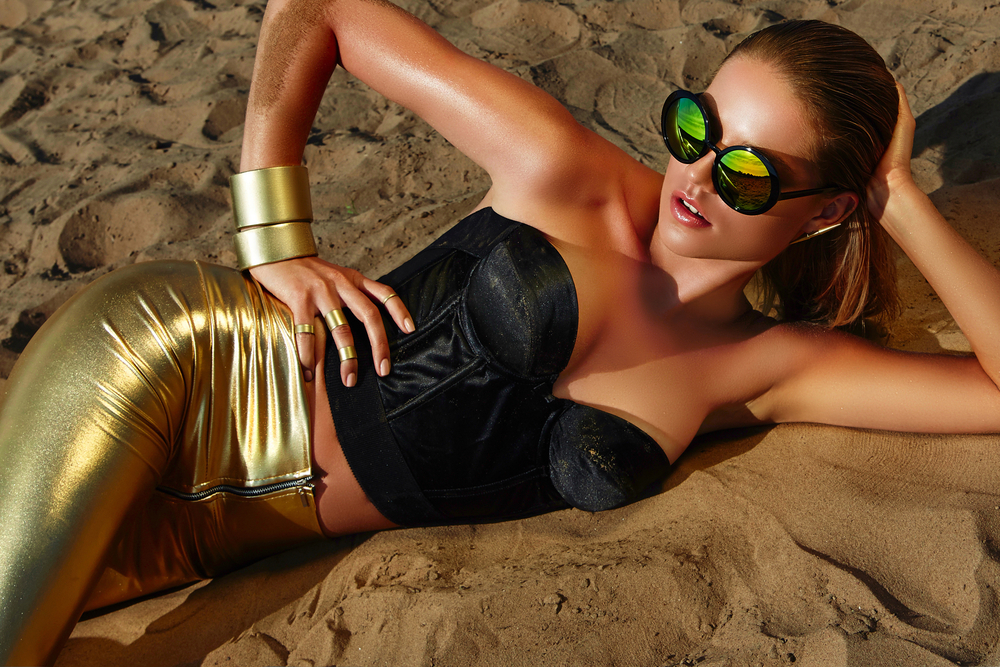
Capturing stunning and captivating photographs is an art form that requires skill, creativity, and a keen eye for detail. While the technical aspects of photography are crucial, one element that elevates a photograph from ordinary to extraordinary is the art of modeling. A skilled model can bring life, emotion, and a story to a photo, transforming a simple image into a work of art. In this article, we will unveil the secrets of modelling (or modeling) in photoshoots, exploring how it contributes to the creation of stunning and captivating photography.
1. The Essence of modeling (by models)
modelling is much more than standing in front of a camera and striking a pose. It is about conveying emotions, telling a story, and bringing a vision to life. A successful model understands the photographer's concept and works collaboratively to bring that vision to reality. They are able to adapt and embody various roles and characters, using their body language, expressions, and movement to communicate with the viewer of the photograph.
2. The Power of Body Language
A crucial aspect of modeling (or modelling) is mastering body language. The way a model positions their body can greatly impact the overall feel and message of a photograph. Every subtle movement, gesture, and placement can create a mood or evoke an emotion. Understanding the power of body language allows a model to direct the viewer's attention and create a sense of connection between the subject and the audience.
3. Expressions that Speak Volumes
A captivating photograph often relies on the model's ability to convey emotions through their facial expressions. From a playful smile to a mysterious gaze, a model must be able to evoke feelings that resonate with the viewer. The eyes, in particular, play a crucial role in capturing the attention of the audience and conveying a sense of depth and intensity. A skilled model knows how to use their eyes to draw in the viewer and create a connection that transcends the boundaries of the photograph.
4. The Role of Poses
Posing is an integral part of modeling that helps create dynamic and visually appealing compositions. Understanding the different types of poses and how they can enhance the overall impact of a photograph is essential. A great pose can accentuate the curves of the body, create interesting lines, and give a sense of movement or stillness. It is the model's ability to strike the right pose, while maintaining a natural and authentic look, that contributes to the overall success of a photoshoot.
5. The Importance of Collaboration
A successful photoshoot is not just about the model, but also about the collaboration between the model and the photographer. A skilled model understands the photographer's vision and actively contributes to the creative process. They are open to experimenting with different ideas, poses, and expressions, while providing valuable input and feedback. The synergy between the model and the photographer is what brings out the best in both parties and leads to outstanding results.
Frequently Asked Questions:
Q1: Can anyone become a model, or do you need to have a specific look or physique?
A1: While there are certain industry standards and preferences, modeling is a diverse field that welcomes individuals of various shapes, sizes, and looks. There is a demand for different types of models, including plus-size, fitness, and commercial models. Ultimately, confidence, professionalism, and the ability to adapt are more important than fitting a specific mold.
Q2: How do models overcome nerves or shyness in front of the camera?
A2: Overcoming nerves or shyness in front of the camera takes practice and experience. Working with a professional photographer who creates a comfortable and supportive environment can help models relax and feel more at ease. Additionally, developing a strong connection with the photographer and focusing on the concept or story behind the photoshoot can also help models overcome any inhibitions.
Q3: What should aspiring models do to improve their skills?
A3: Aspiring models can improve their skills by studying and learning from experienced professionals in the industry. Taking modeling classes or workshops can provide valuable insights into posing techniques, body language, and facial expressions. Building a diverse portfolio that showcases their abilities and working with different photographers can also help aspiring models refine their craft.
Q4: How important is confidence in modeling?
A4: Confidence is essential in modeling, as it allows models to project themselves authentically and assertively in front of the camera. Being confident helps models exude a certain energy and captivate the attention of the audience. However, it's important to note that confidence can be developed over time and with experience.
Q5: What are some common mistakes models should avoid in photoshoots?
A5: One common mistake is not communicating with the photographer or not seeking clarification on the concept or vision. It's crucial for models to have an open line of communication with the photographer to ensure they are on the same page. Additionally, excessive reliance on a single pose or expression can limit the variety and impact of the photographs. Models should be willing to experiment, try different poses, and convey a range of emotions to create a diverse and visually appealing portfolio.
In conclusion, modeling plays a vital role in creating stunning and captivating photography. From understanding body language and mastering expressions to collaborating with photographers and embracing versatility, models bring life and emotion to photographs. By unraveling the secrets of modeling, aspiring photographers can elevate their craft and create timeless and captivating imagery.
Other useful resources
- https://en.wikipedia.org/wiki/Category:Models_by_modeling_agency
- https://blog.planetmodelphoto.com/models/modeling/